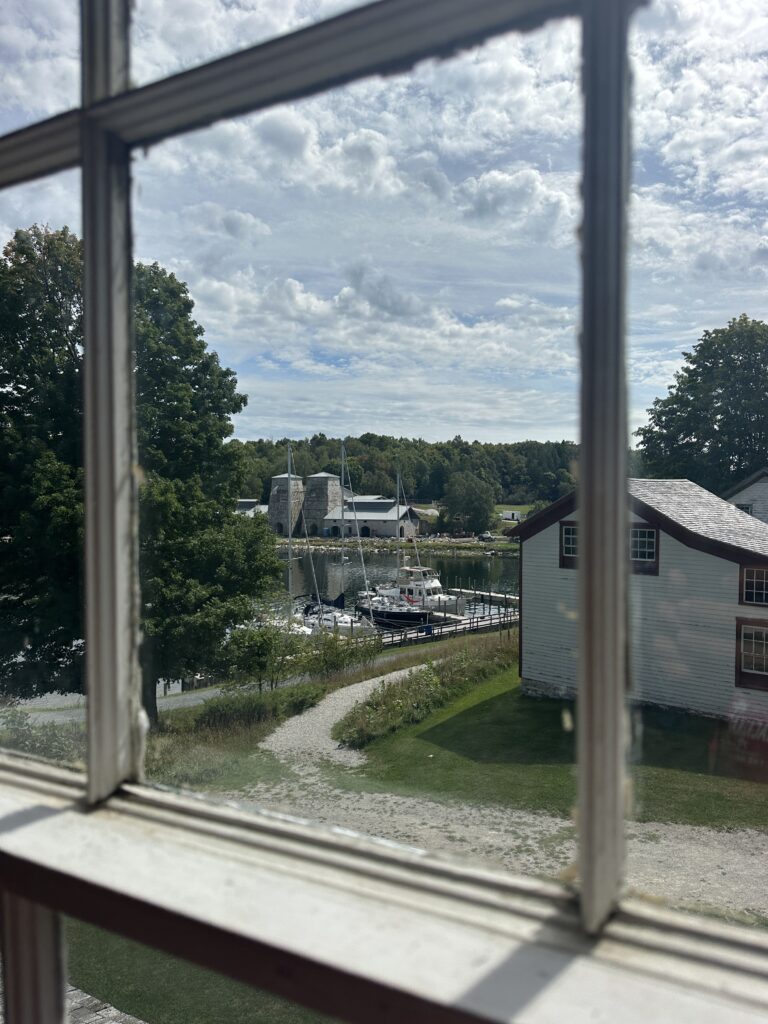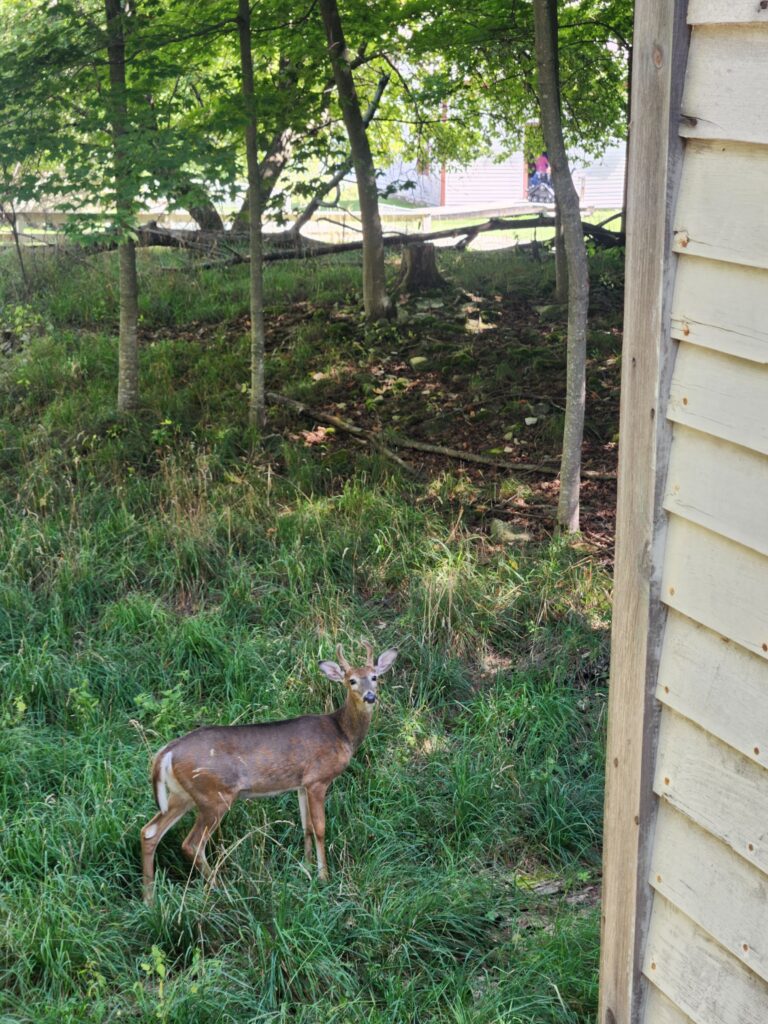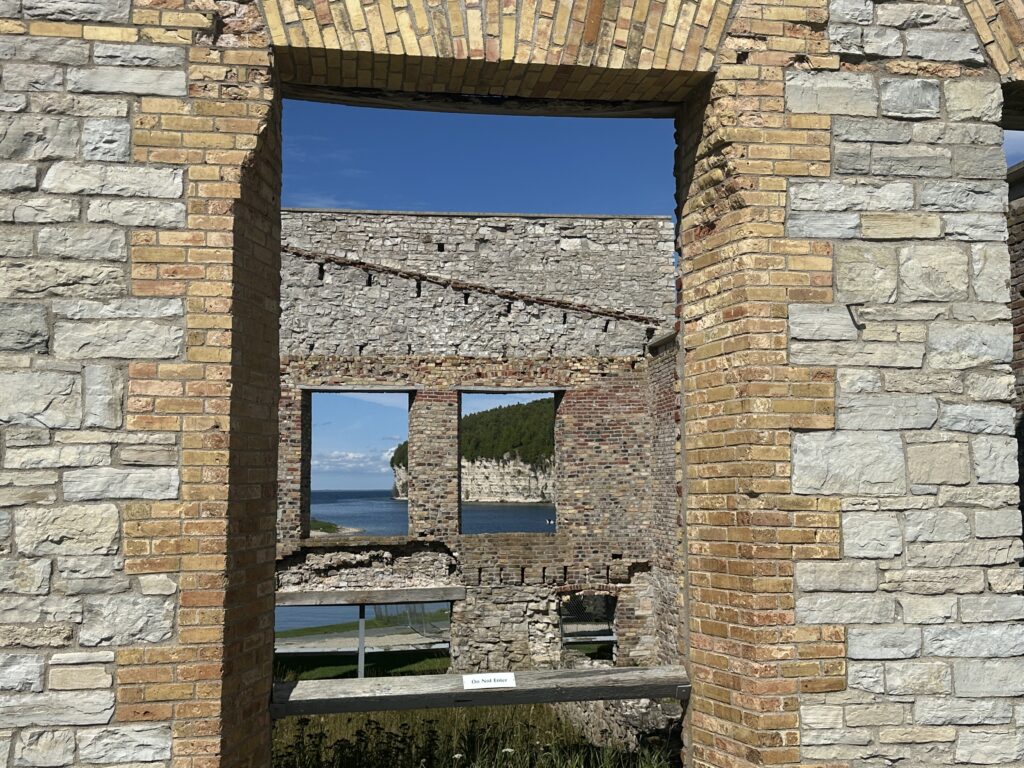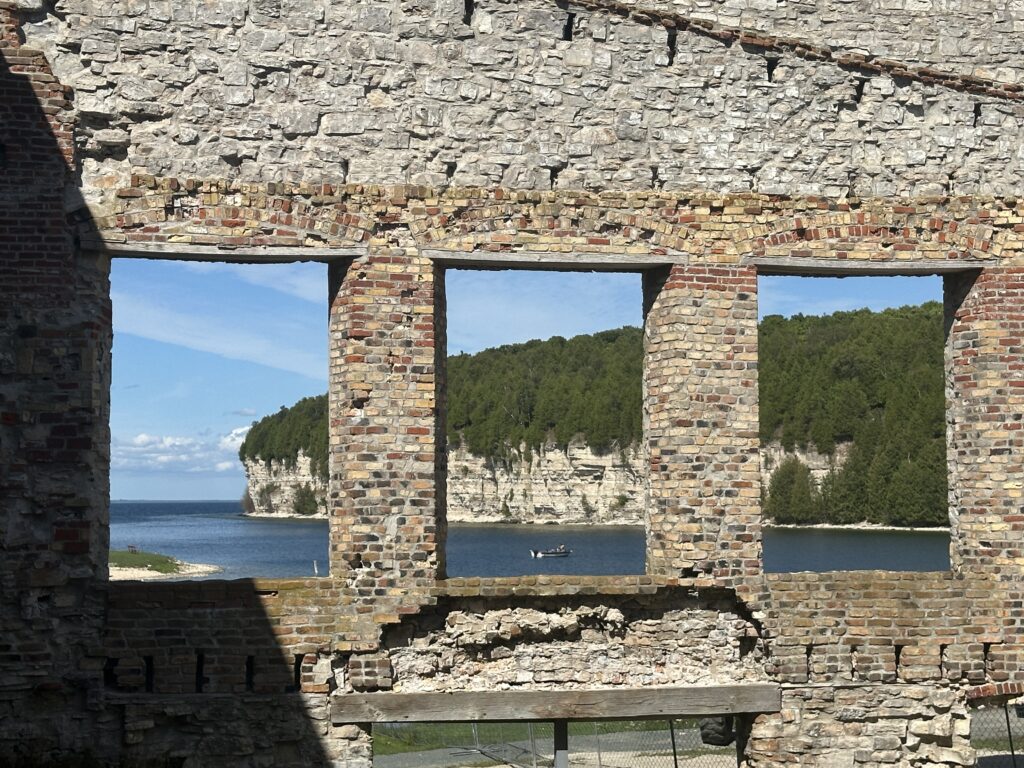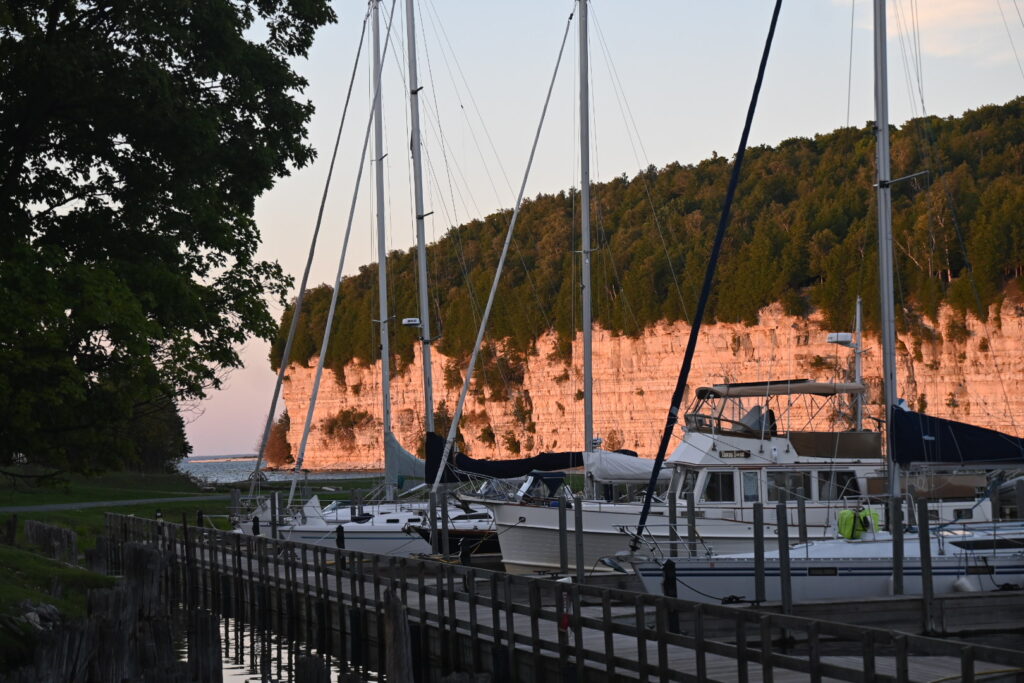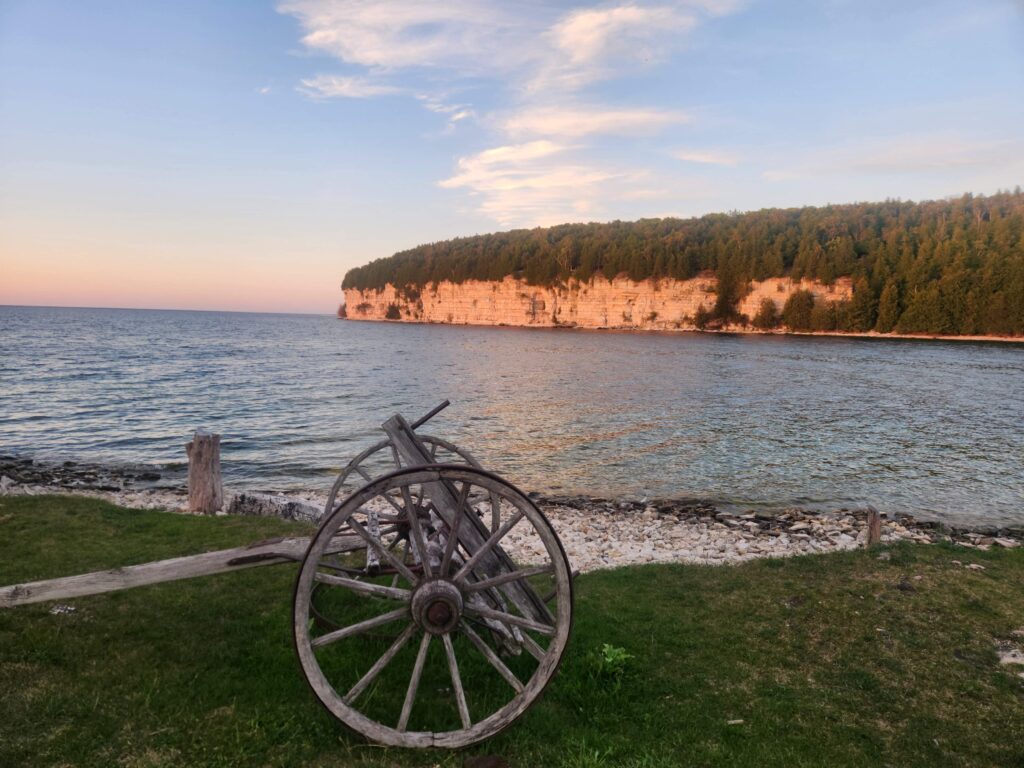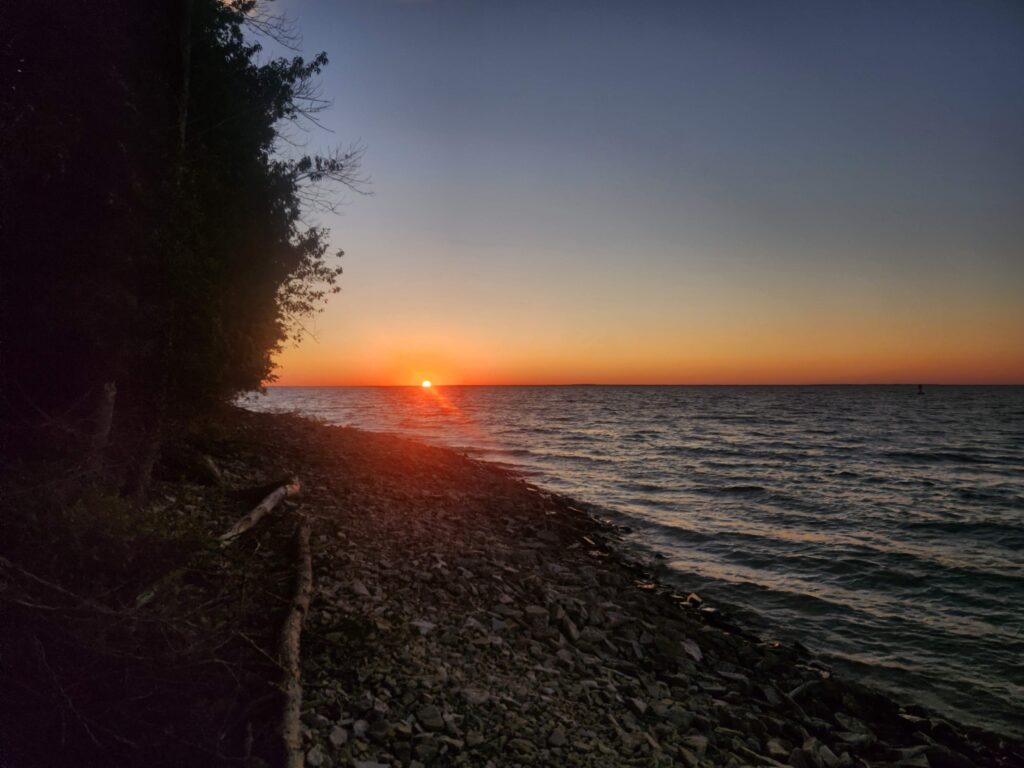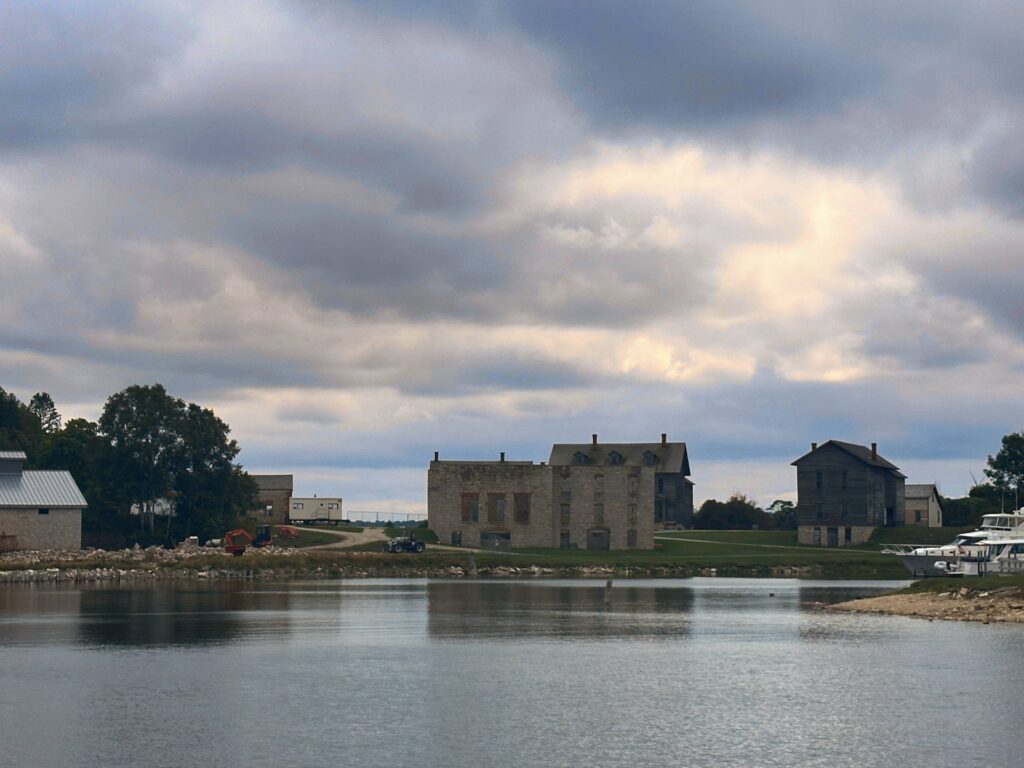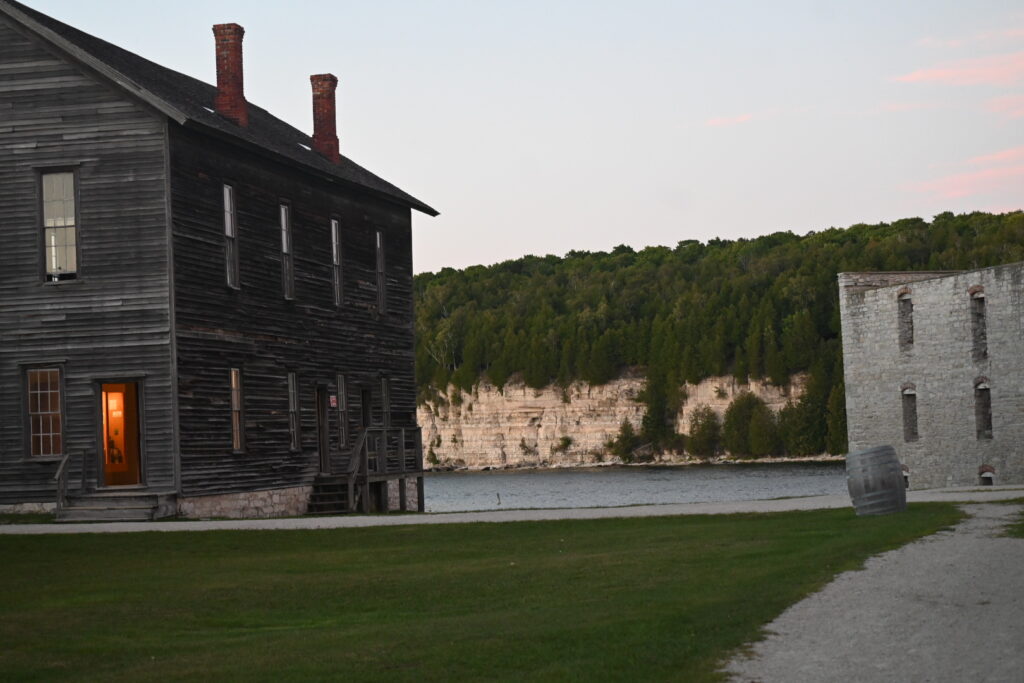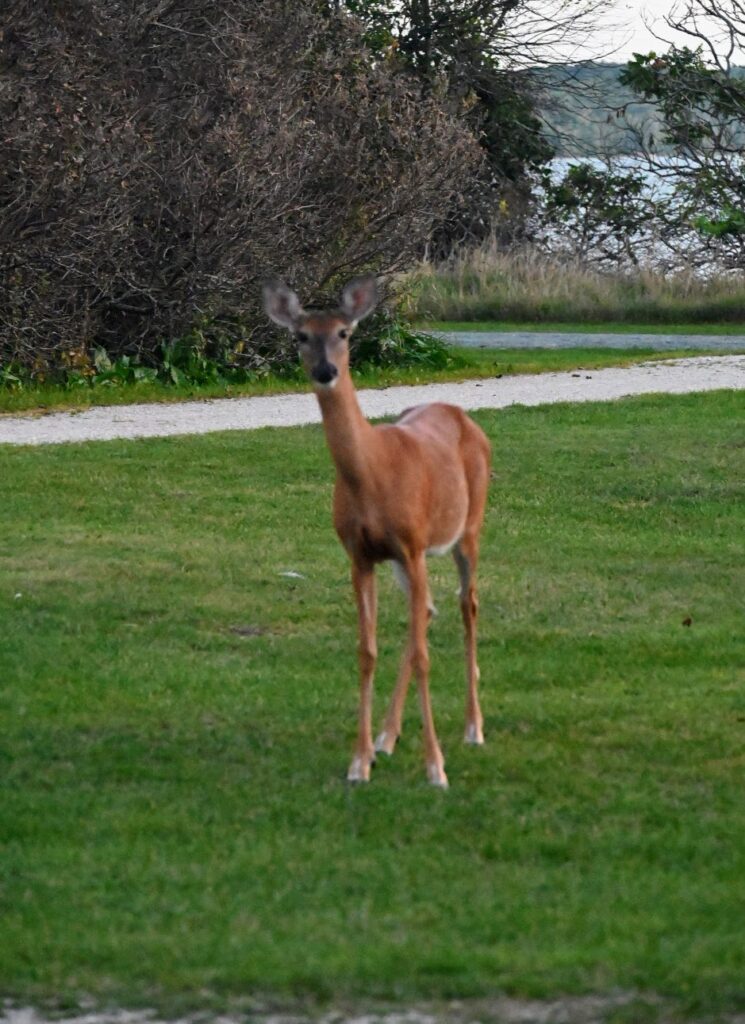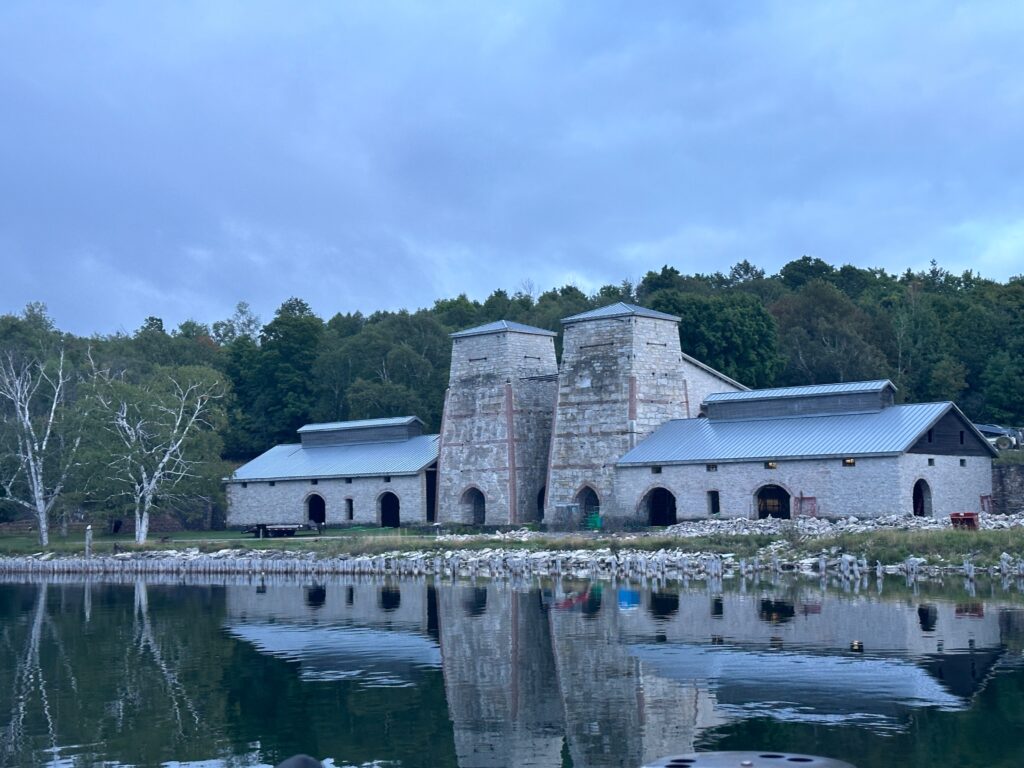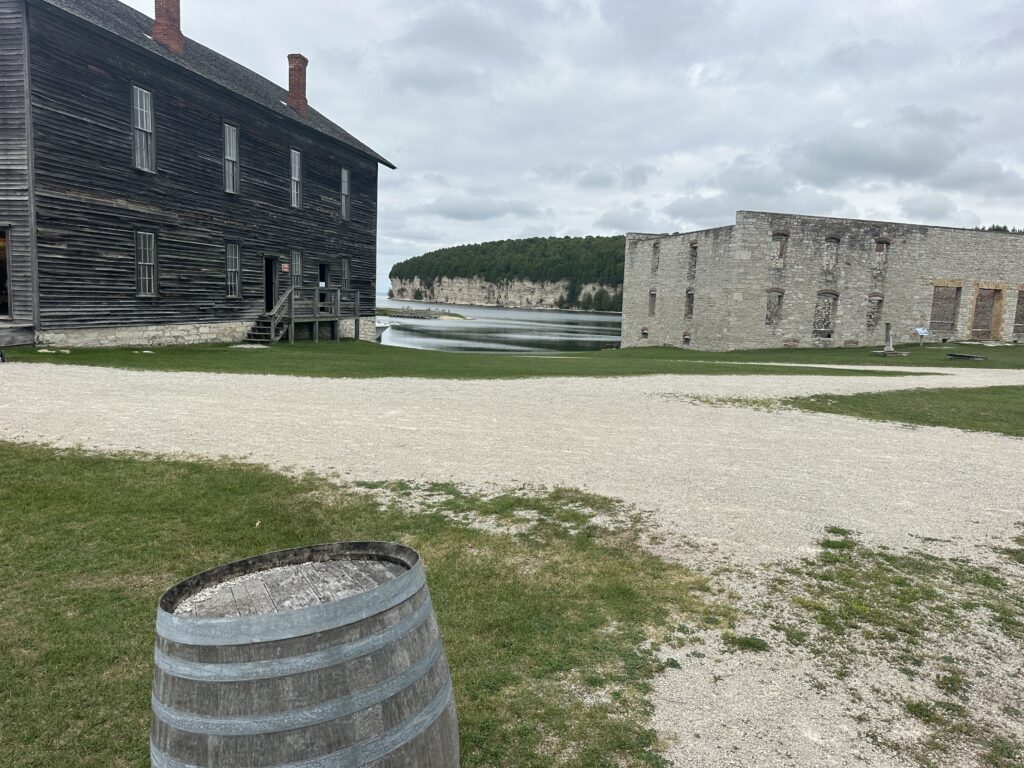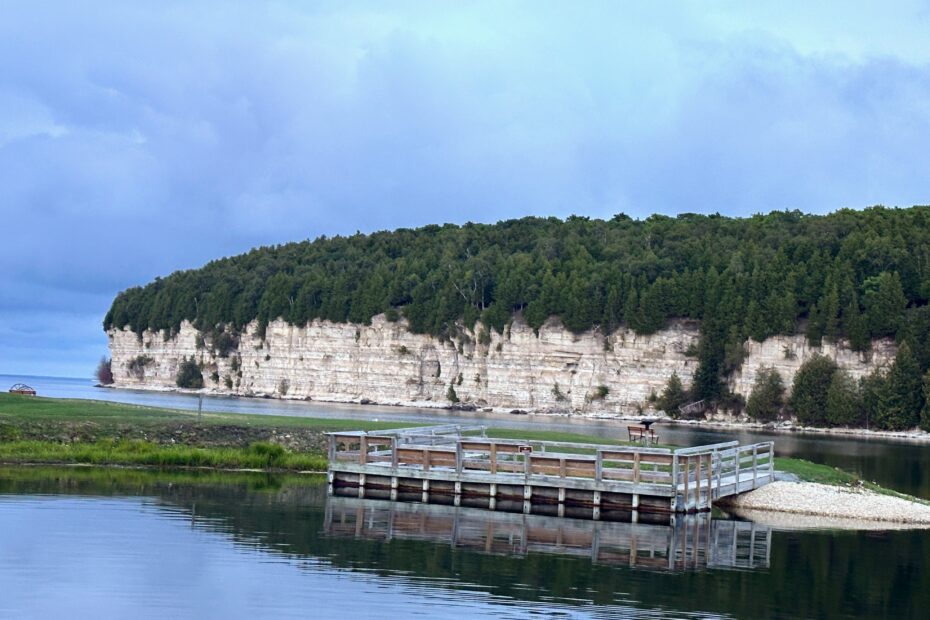We switched sides! Once on Lake Michigan, boaters have two options to get to Chicago. One route takes the east side of Lake Michigan, exploring the west shore of Michigan; the other is the west side of the lake, exploring the east short of Wisconsin. Both sides have much to offer, but they are different in flavor. Michigan is more touristy with safe harbors and cute little towns every 30 or so miles. Wisconsin has a mix or remote stops in park like settings, big cities and some cute little towns.
Most folk on America’s Great Loop choice to stay on the Michigan side, mainly because this means they do not need to cross Lake Michigan. Our sense of adventure and desire to see as much as we can, we opted to see/cruise both sides! We cruised a bit of the Michigan side and then did the long crossing of Lake Michigan over to Wisconsin. There were shorter places to cross but we wanted to get a taste of remote areas of North Wisconsin. Our initial plan was to take two days to cross heading a little north to stop and explore Beaver Island. However, the weather was not looking good for day 2, so we went did it in a day! Thankfully, it was a beautiful day with great conditions although it was long! Funny our first stop on ‘Wisconsin Side’ was in the southern side of Michigan’s Upper Peninsula.
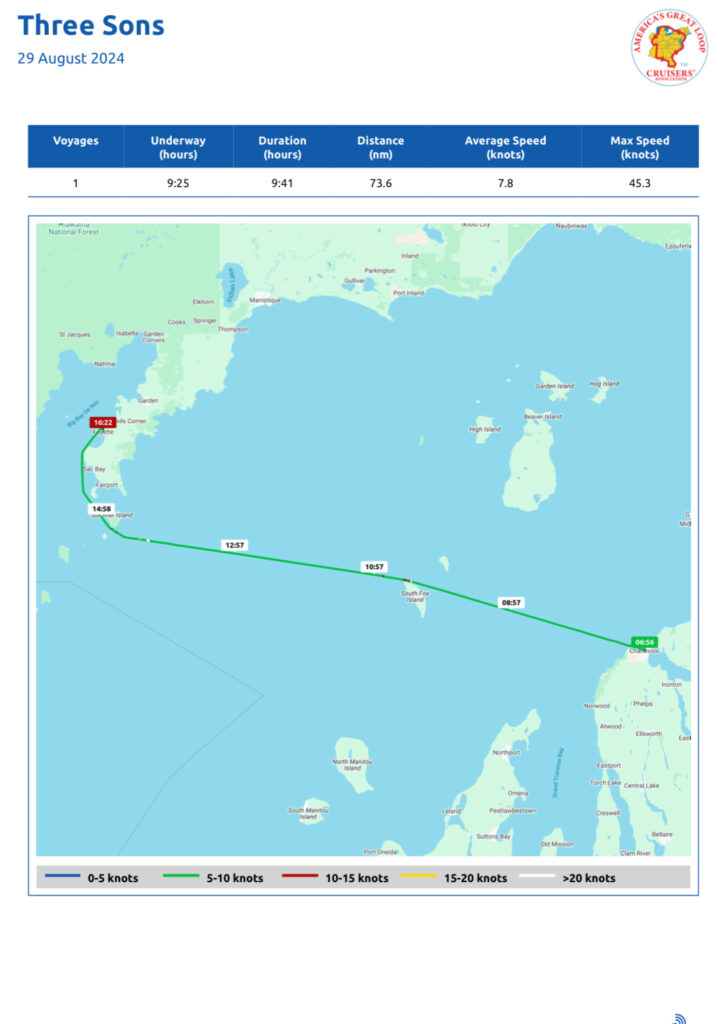
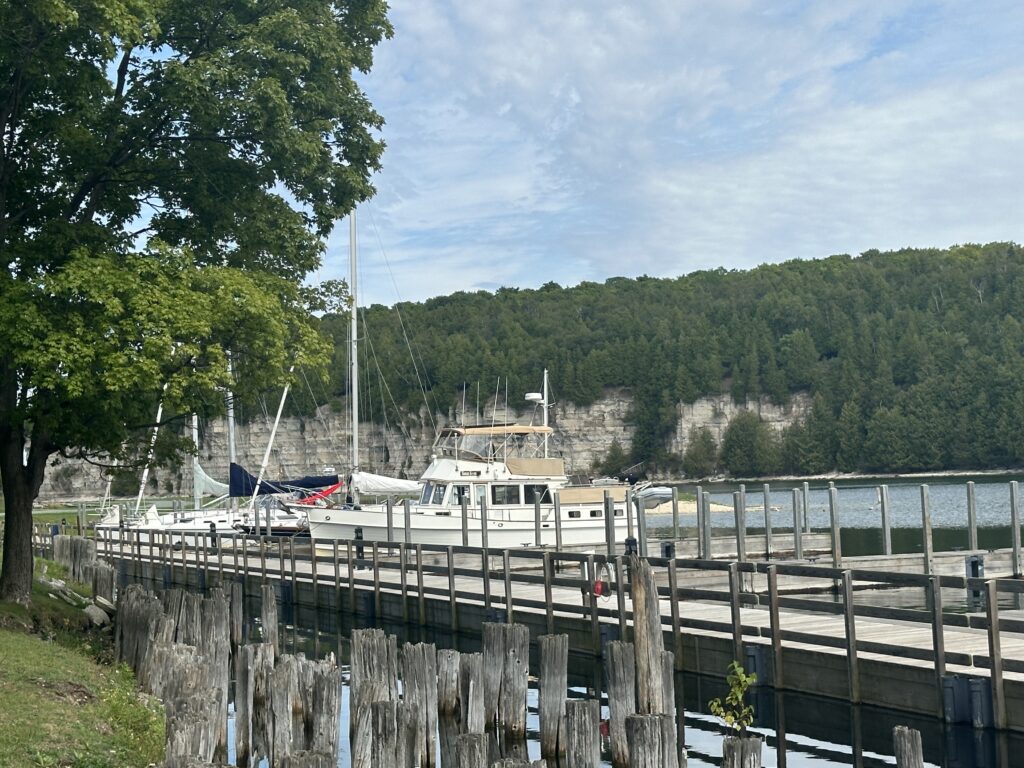
Arriving at the very small isolated dock in Fayette Historical State Park a boater came over to catch our lines and said “welcome to a magical place.” Fast forward to the end of our stay and we could not agree more about this statement! The scenery was amazing with a ghost like town surrounded by high limestone walls.
Snail Shell Harbor is in the middle of a the state park that was once a bustling industrial community that manufactured charcoal pig iron between 1867 and 1891. The park consist of well-preserved buildings that have been standing for 150 years. Stone buildings had their doors open and displays inside the depict life during the 19th century.
